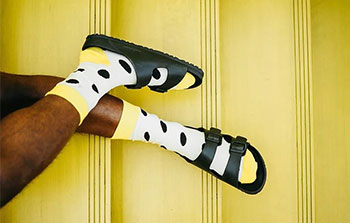 Certain foods are crucial to help recover from an injury. When we have damaged tissue, like a torn muscle or tendon, our body needs specific nutrients to heal stronger, and faster.
Certain foods are crucial to help recover from an injury. When we have damaged tissue, like a torn muscle or tendon, our body needs specific nutrients to heal stronger, and faster.
Healthy diet > Supplements
Vitamins and minerals from a food source are SUPERIOR to taking a supplement. Healthy food offers hundreds of antioxidants, carotenoids, flavonoids, and minerals not found in supplements! Additionally, when we eat a health diet, our body automatically maximizes absorption of "the good stuff", and eliminates what we don't need. Taking supplements can result in extremely high, or toxic, levels of vitamins, which can be harmful.
Assess your diet FIRST before taking supplements to ensure your body is getting what it needs to heal.
 ~50% of our body composition is water~
~50% of our body composition is water~
We've all heard the cardinal rule for daily water consumption... "Adults need 6 to 8- 8oz glasses of water". But this isn't personalized for you or your activity level. YOUR WEIGHT determines your body's need. Other factors to consider are activity level, outside temperature, pregnancy, diet, and medications/health conditions.
Here's a more personalized way to estimate how much water YOU should be drinking:
Example: 150lb x 0.5= 75oz
Exercise for an hour= (60min/30min) x 12oz= 24oz
Recommended: 99oz of water
Signs of dehydration include: dry mouth, headache, muscle cramps, dark or strong smelling urine.
Talk to a medical professional if you have questions about your hydration level.
 Are YOU working through an injury or rehabbing after surgery? Need a rest day as a competitive athlete?
Are YOU working through an injury or rehabbing after surgery? Need a rest day as a competitive athlete?
Aquatic/Water therapy provides numerous benefits:
Aquatic therapy is a MUST for athletes and HIGHLY RECOMMENDED for patients recovering from injuries or rehabilitating after surgery.
Find out if it's safe for you to incorporate aquatic therapy into your routine.
 Believe it or not, there is ZERO hard scientific evidence backing scar management with creams, ointments, patches, lasers, retinol, steroids, and more. It's a 22.5 billion dollar industry (2022) for good reason...Most people want to avoid unsightly scars!
Believe it or not, there is ZERO hard scientific evidence backing scar management with creams, ointments, patches, lasers, retinol, steroids, and more. It's a 22.5 billion dollar industry (2022) for good reason...Most people want to avoid unsightly scars!
Your body's ability to heal an incision is largely determined by:
So what to do?
The BEST thing you can do to maximize your body's ability to heal is to eat a healthy, well-balanced diet and drink plenty of water. It will keep your cells happy and functioning properly.
 Compression garments (CGs), such as socks, sleeves, shorts, etc., have been investigated for years to elucidate health benefits.
Compression garments (CGs), such as socks, sleeves, shorts, etc., have been investigated for years to elucidate health benefits.
What YOU should know:
Use of compression during and after exercise can:
For patients recovering from surgery, CGs promote circulation, reduce swelling, and decrease risk of blood clots (DVT).
We can ALL benefit from compression garments. Talk to a healthcare professional today about how COMPRESSION can help you!
 Your toes BEND during sports, exercise, or performing daily activities helping maximize your propulsion or push off strength. How far your toes bend can be determined by what you have on your feet (or in your shoes)!
Your toes BEND during sports, exercise, or performing daily activities helping maximize your propulsion or push off strength. How far your toes bend can be determined by what you have on your feet (or in your shoes)!
Shoe bending stiffness, or longitudinal bending stiffness= how easily a shoe can bend.
Think of a minimalist shoe. Lightweight, little to no cushion or stability, and super flexible.
Next, think of a traditional running shoe. Slightly heavier, more cushion and stability, less flexibility. ~GREATER BENDING STIFFNESS~
It’s reported that increasing the longitudinal bending stiffness of a shoe DECREASES energy expenditure until a low point is reached. This suggests that there is an OPTIMAL SHOE STIFFNESS, which is also based on YOUR ANATOMY, SPORT, ACTIVITY LEVEL, and COMFORT.
A rigid carbon fiber footplate that runs the length of your shoe reduces the bending moment at the toe joints, which is believed to reduce energy expenditure (in certain conditions). Additionally, a carbon fiber insert lengthens the foot as a lever arm, which increases the power of the entire lever. #biomechanics
Remember: Every athlete is different! What works for one athlete, may not work for you. There is no “one size fits all” solution when it comes to shoe gear OR performance equipment. This is a growing area of research, so stay tuned!
 Did you know that GLOBALLY 50% of the population receives insufficient Vitamin D?!?!
Did you know that GLOBALLY 50% of the population receives insufficient Vitamin D?!?!
Studies show 80% of our Vitamin D comes from UV-B rays from SUNLIGHT (!) and 20% from our diet.
Vitamin D is ESSENTIAL for the absorption of Calcium... and maximizing bone health! What can YOU do to maximize your Vitamin D intake and keep your bones strong and healthy?
1. Get regular physical exercise indoors and outdoors.
2. Get 10-15 minutes of exposure to sunlight each day.
3. Eat a healthy, well-balanced diet that includes foods rich in Vitamin D (fatty fish, mushrooms, egg yolks, and fortified foods such as cereals, orange juice, low-fat dairy, and plant-based milk alternatives)
4. Take a supplement if you aren't getting adequate intake (talk to a medical professional for recommended dosing).
Patients often ask HOW MUCH Vitamin D they should be getting. A healthy level of Vitamin D for both children and adults is between 40-60ng/mL. If you have a bone injury, like a stress fracture, or recently underwent surgery, your preferred level may be closer to 60ng/mL. Most physicians would agree that levels under 30ng/mL are "insufficient." Fatigue, difficulty sleeping, depression, hair loss, and muscle weakness/cramps are just a few symptoms of Vitamin D deficiency.
***Ask a medical professional for help determining if you should be tested for a deficiency or require supplementation.***
 Stress fractures are overuse injuries, related to intense training, sudden increase in activity level, and repetitive movement patterns. Other related factors can be wearing worn out shoes or the wrong shoe type, poor technique, insufficient rest, and changes to the surface you're performing on. The prevalence of stress fractures is on the rise, especially in young athletes and adults beginning new workout routines after periods of inactivity.
Stress fractures are overuse injuries, related to intense training, sudden increase in activity level, and repetitive movement patterns. Other related factors can be wearing worn out shoes or the wrong shoe type, poor technique, insufficient rest, and changes to the surface you're performing on. The prevalence of stress fractures is on the rise, especially in young athletes and adults beginning new workout routines after periods of inactivity.
What is a stress fracture? It's a weakened area in the bone due to microscopic tears. Without proper treatment, the tears can progress into a complete fracture.
Common symptoms:
It's important to seek treatment from a medical professional if you suspect a stress fracture. Prompt diagnosis, treatment, and rehabilitation can help keep you moving and prevent further injury.
 One of the most common complaints during pregnancy is foot pain and swelling. Both are very normal and extremely common. Read on to learn more about what the heck is going on, and how to stay comfortable!
One of the most common complaints during pregnancy is foot pain and swelling. Both are very normal and extremely common. Read on to learn more about what the heck is going on, and how to stay comfortable!
During pregnancy, your body increases circulation of certain hormones, like relaxin, which cause ligamentous laxity.
Your feet may widen, lengthen, and become painful from the stretch in your ligaments and loss of structural support. To prevent discomfort from these changes, wear supportive shoes at all times. Over-the-counter insoles or custom orthotics can help provide the arch support and cushion you need. Wide toe box athletic shoes and open toed, but supportive, sandals can help accommodate your growing feet. (Spoiler alert: your feet may never go back to their pre-pregnancy size.)
As your baby grows, your center of gravity changes, increasing the pressure on different areas on the bottom of your feet.
Protect yourself from heel pain and plantar fasciitis throughout your pregnancy by paying attention to the type of shoes you wear. Early in your pregnancy, your weight increases but your center of gravity hasn't shifted much. Shoes with padding in the ball of your feet will help accommodate the increased pressure from weight gain. Look for shoes with more substantial heel cushioning later on in your pregnancy, when your center of gravity moves backward, shifting pressure to your heels.
As your baby grows, your body holds more fluid, but also becomes less efficient at filtering and moving fluid throughout the body, leading to swelling. Here are recommendations for keeping your swelling in check throughout your pregnancy:
Notify your doctor when:
 Modern research tells us that "old school" static stretching doesn't cut it before sports or intense exercise. We now know that dynamic stretching is the key to improving agility, speed, performance and decreasing injuries.
Modern research tells us that "old school" static stretching doesn't cut it before sports or intense exercise. We now know that dynamic stretching is the key to improving agility, speed, performance and decreasing injuries.
Benefits of a Dynamic Warm-Up:
Dynamic warm-ups decrease injury by prepping your body for the work. Sensors in your muscles start sending signals to your brain to communicate their needs. This results in increased responsiveness, so your body is primed for peak performance. Tailor your dynamic warm-up to your sport or activity so that the proper muscle groups are turned on and ready to go.
Is there still a place for static stretching? Yes. Incorporate slow, static stretching into your cool down routine.